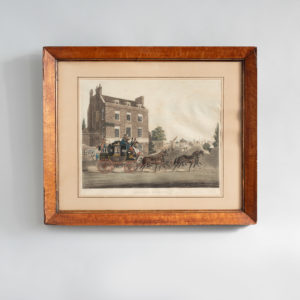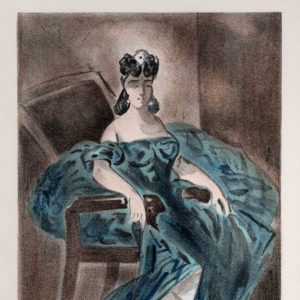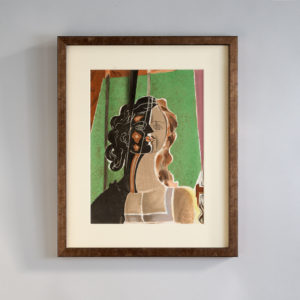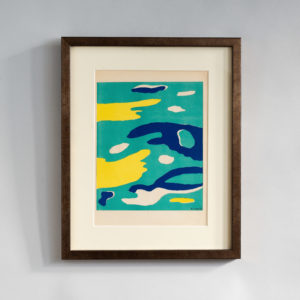3 items found
Page 1 of 1
-

Crewel work panel depicting The Festival International du Cirque de Monte-Carlo.
£650Crewel work panel depicting The Festival International du Cirque de Monte-Carlo.
The very unusual crewel work panel takes images from past poster art work, advertising the festival in the years of 1990 (the15th annual festival) and 1998 (the 22nd annual festival). The art of crewel work dates back centuries, crewel being the old Welsh name for wool, the technique is very similar to embroidery, the only real difference is that the needle used is larger which helps thread the thicker wool yarn. The International Circus Festival of Monte-Carlo( Festival International du Cirque de Monte-Carlo) is an annual circus and awards show, that takes place every year in the month of January. The festival was created in 1974 by Prince Rainer III of Monaco and has been used to promote circus performers at the pinnacle of their profession. Please note as the shown in the photos two areas of wear.£650 -

The Quicksilver
£180The Quicksilver
A Royal Mail coach, The Quicksilver, passes the Star and Garter at the Brentford end of Kew Bridge. The Quicksilver was the London to Falmouth Royal Mail Coach and operated in the years between 1835 and 1859. In 1837 it became the fastest long-distance mail coach in England with an average speed of 10.25 miles an hour with the London to Falmouth journey being accomplished in 16 hours and 34 minutes. The Star and Garter was a venerable old Coaching Inn positioned on the Middlesex shore of the Thames by Kew Bridge. It closed in 1983. Mounted and framed in an angled maple frame.£180 -

Like Father Like Son
£120Like Father Like Son
A framed Victorian advertisement poster for Frisbys Boots featuring the War Hero Frederick Sleigh Roberts, 1st Earl Roberts and his son, killed at the Battle of Colenso in the Boer War.£120
Featured Items
-

Portraits Part I by Constantin Guys, Verve Vol 2 / No. 5-6.
£500Portraits Part I by Constantin Guys, Verve Vol 2 / No. 5-6.
The Verve Review was a purposefully luxurious. It ran from 1937 to 1960, but with only 38 editions available, due to the high degree of design and editorial work dedicated to each issue. Each edition contained unique lithographic prints, commissioned by the editor, and each cover a double-page lithograph elaborated by one of the artists contained within. It was the brainchild of its editor Stratis Eleftheriades, a Greek National who moved to Paris in the early thirties to take part in the growing Modernist movement, writing under the name of Teriade.£500 -

Figure by Georges Braque, Verve Vol 2 / No. 5-6.
£800Figure by Georges Braque, Verve Vol 2 / No. 5-6.
The Verve Review was a purposefully luxurious. It ran from 1937 to 1960, but with only 38 editions available, due to the high degree of design and editorial work dedicated to each issue. Each edition contained unique lithographic prints, commissioned by the editor, and each cover a double-page lithograph elaborated by one of the artists contained within. It was the brainchild of its editor Stratis Eleftheriades, a Greek National who moved to Paris in the early thirties to take part in the growing Modernist movement, writing under the name of Teriade.£800 -

Comets by Wassily Kandinsky, Verve Vol. 1 / No. 2.
£800Comets by Wassily Kandinsky, Verve Vol. 1 / No. 2.
The Verve Review was a purposefully luxurious. It ran from 1937 to 1960, but with only 38 editions available, due to the high degree of design and editorial work dedicated to each issue. Each edition contained unique lithographic prints, commissioned by the editor, and each cover a double-page lithograph elaborated by one of the artists contained within. It was the brainchild of its editor Stratis Eleftheriades, a Greek National who moved to Paris in the early thirties to take part in the growing Modernist movement, writing under the name of Teriade.£800 -

The Four Elements, Water by Fernand Leger, Verve Vol. 1 / No. 1.
£600The Four Elements, Water by Fernand Leger, Verve Vol. 1 / No. 1.
The Verve Review was a purposefully luxurious. It ran from 1937 to 1960, but with only 38 editions available, due to the high degree of design and editorial work dedicated to each issue. Each edition contained unique lithographic prints, commissioned by the editor, and each cover a double-page lithograph elaborated by one of the artists contained within. It was the brainchild of its editor Stratis Eleftheriades, a Greek National who moved to Paris in the early thirties to take part in the growing Modernist movement, writing under the name of Teriade.£600
